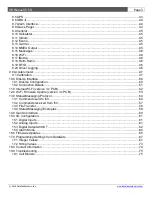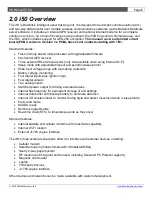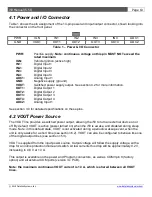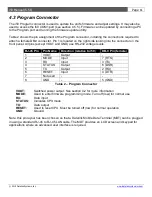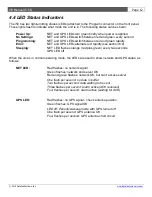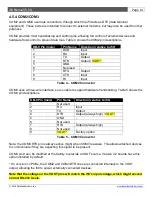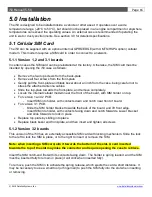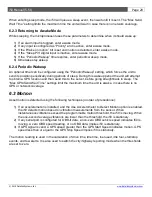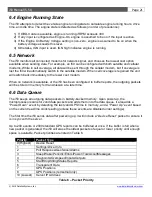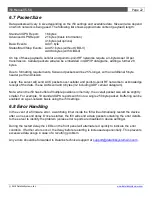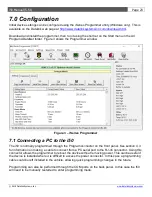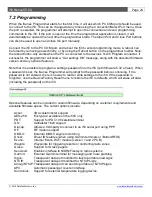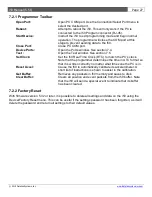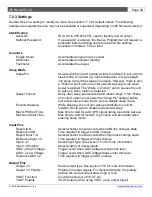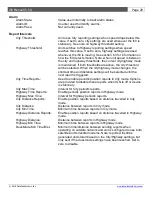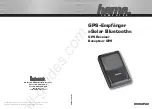
i50 Manual (5.51)
Page 14
© 2018 Datalink Systems, Inc.
www.datalinksystemsinc.com
4.5.4 COM2/COM3
COM2 and COM3 use male connectors, through which the i50 acts as DTE (data terminal
equipment). These ports are intended to connect to external modems, but may also be used for other
purposes.
COM2 provides most handshaking and control pins, allowing full control of external devices and
hardware flow control to prevent data loss. Table 4 shows the COM2 pin descriptions.
DB-9 Pin (male)
Pin Name
Direction (relative to i50
)
1
DCD
Input
2
RX
Input
3
TX
Output
4
DTR
Output / VOUT*
5
GND
-
6
Not used
-
7
RTS
Output
8
CTS
Input
9
RI
Input
Table 4
– COM2 Connector
COM3 uses a three-wire interface, so is unable to support hardware handshaking. Table 5 shows the
COM3 pin descriptions.
DB-9 Pin (male)
Pin Name
Direction (relative to i50
)
1
Not used
-
2
RX
Input
3
TX
Output
4
DTR
Output (always high) / VOUT*
5
GND
-
6
Not used
-
7
RTS
Output (always high)
8
Not used
-
9
VOUT*
Factory option
Table 5
– COM3 Connector
Note: the COM3 RTS pin is always active (high) when COM3 is awake. This allows attached devices
to communicate if they are expecting this signal to be present.
COM3 pin 9 can be modified at the factory to provide a VOUT source. Version 3.2 boards have this
option installed by default.
* On version 3.x PCBs, the COM2 and COM3 DTR lines are connected internally to the VOUT
output, allowing the i50 to power externally connected devices.
Note that the voltage on the VOUT pins
will match the i50’s input voltage, which might exceed
normal RS-232 levels.



